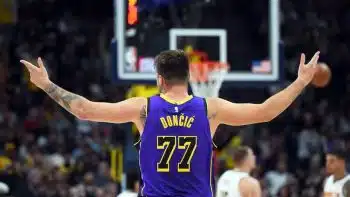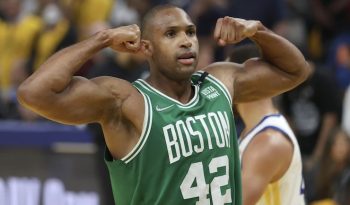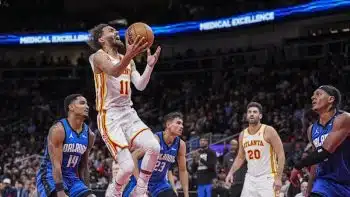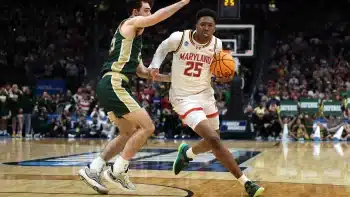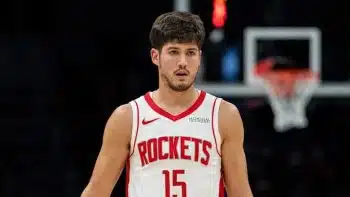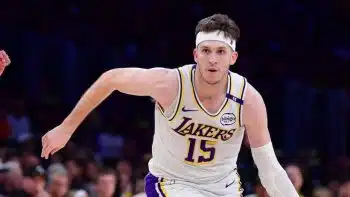NBA
NBA Daily: For Better And Worse, Westbrook Comes As Advertised
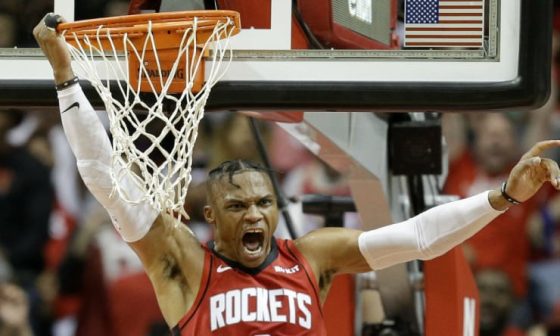
He walked an actual red carpet in designer coveralls on his way to the pregame locker room. He scowled and snarled and flexed and screamed. He raced the ball up the floor at a speed that seemed dangerous and came out of nowhere for soaring weak-side rebounds. He put up the numbers, too, scoring 24 points, grabbing 16 rebounds and dishing out 7 assists.
But in Russell Westbrook’s highly-anticipated debut with James Harden and the Houston Rockets, all that we’ve come to expect from him also proved his new team’s undoing when it mattered most.
The Milwaukee Bucks led the Rockets 106-100 with just over three minutes left when Harden caught a pass from Westbrook above the arc in the middle of the floor. With Eric Bledsoe hounding him on the catch, Houston’s franchise player turned over his left shoulder, quickly spinning into position for another tough off-dribble try from three. As Harden rose to shoot, he saw Wesley Matthews digging down off the wing to the nail, leaving a shooter wide open.
Instead of letting fly, Harden threw the ball to his left, where it hit Westbrook in perfect rhythm on the wing. Matthews offered a feint contest, but not enough to bother the shot. It turned out not to matter anyway.
Westbrook’s triple rimmed in and out, costing the Rockets a golden opportunity to cut their deficit in half. The next trip down, about 20 seconds later, Milwaukee played the scouting report to perfect effect again, sending an extra defender Harden’s way at the expense of an uncontested three from Westbrook.
Same result.
Houston, obviously, didn’t lose on Thursday solely because Westbrook missed those open jumpers.
Harden struggled to score from the opening tip, frustrated by the Bucks – just like last season – playing high on his left shoulder to prevent his vaunted step-back three, ceding a path right to the towering Brook Lopez at the rim. The Rockets didn’t get much from the bench, laying bare just how significant the loss of Gerald Green is for a team already light on proven playoff performers. They led by 16 points at halftime and nine to start the fourth quarter, almost half of which Giannis Antetokounmpo was forced to watch from the bench after fouling out early.
But Westbrook’s inability to consistently knock down threes when the defense cheats away from him is a story much bigger than one game. It will follow Houston all season, just like it did over the past few months once the league’s most volatile and accomplished tandem of superstars was formed.
Westbrook shot 29.0 percent on 5.6 tries from deep per game last season, which counts as one of the several worst three-point shooting campaigns ever. His labors as a long-range shooter date back to the early part of the decade, when he and Harden were first teammates with the Oklahoma City Thunder.
As time passed after Harden was traded to Houston, it became apparent that no matter how dynamic Kevin Durant was with the ball in his hands, Oklahoma City was best served with Westbrook serving as its primary creator – a dynamic stemming solely from the disparate levels of attention defenses paid them elsewhere. It’s why Paul George, a bit overstretched as an offensive alpha dog, fit so seamlessly next to Westbrook offensively, too.
But it’s also among the reasons the Thunder moved on from them so suddenly, finally fully confident they couldn’t win a title with Westbrook. Even in Chris Paul’s diminished state last season, that was never quite true of the Rockets. Paul had grown sick of playing with Harden and vice-versa, and another hamstring injury – plus 14 seasons of wear and tear – left him lacking the burst and explosiveness that first propelled him to superstardom.
Harden is nearly an offense unto himself, though, and Paul had just enough juice left in the tank to muster efficient offense when asked to run the show solo. Most importantly? He made 43.1 percent of his catch-and-shoot threes last season and has years of on-court evidence backing up that stellar mark, forcing defenses to choose between putting another body in Harden’s way or risking an open triple from a deadeye shooter. Westbrook, on the other hand, shot an ugly 31.9 percent on catch-and-shoot threes and has managed better than league average on such attempts just once in his career.
When Harden didn’t have the ball on Thursday and Westbrook was in the game, the Rockets reverted back to essentially playing 4-on-4, a tendency that became more common last season. While one less defender in the action certainly makes the game easier on Westbrook, his deficiencies as a shooter still rear their ugly head.
Paul is one of the best mid-range shooters of all time and would routinely break Houston’s analytics guidelines to hunt step-back twos when Harden needed a break. Westbrook is inclined to pull-up jumpers from outside the paint, too, but as much at behest of the defense as his own desire. The Bucks went under ball screens set for Westbrook inside the arc again and again, sometimes even playing far enough off him to make it hard for the Rockets to initiate offense.
Westbrook took four of Houston’s six mid-range jumpers on Thursday, coming up empty on each.
The caveats and silver linings are so obvious that they don’t need much explanation. The Rockets came close to beating a top-tier championship contender in their first game with Westbrook, on a night Harden and Gordon combined to shoot 6-of-32 from the field. In 21 minutes, lineups featuring Harden and Westbrook outscored Milwaukee by three and mustered a solid 110.4 offensive rating, per NBA.com, pushing the pace with abandon.
To Mike D’Antoni, those numbers and takeaways may very well loom larger than the final score. But when he and his staff go to the film, they’ll nevertheless see the missed opportunities and fit issues we’ve all expected to for months – and will continue plaguing Houston throughout 2019-20.
